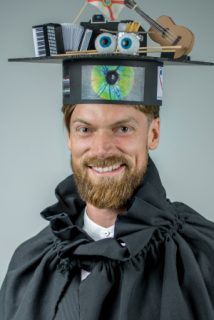Markus Mayer
Automated Glaucoma Detection with Optical Coherence Tomography
Abstract
The number of patients suffering from the glaucoma disease will increase in the future. A further automation of parts of the diagnostic routine is inevitable to use limited examination times more efficiently. Optical coherence tomography (OCT) technology has become a widespread tool for glaucoma diagnosis, and data collections in the clinics have been built up in recent years that now allow for data mining and pattern recognition approaches to be applied to the diagnostic challenge. A complete pattern recognition pipeline to automatically discriminate glaucomatous from normal eyes with OCT data is proposed, implemented and evaluated. A data collection of 1024 Spectralis HRA+OCT circular scans around the optic nerve head from 565 subjects build the basis for this work. The data collection is labeled with 4 diagnoses: 453 healthy (H), 179 ocular hypertension (OHT), 168 preperimetric glaucoma (PPG), and 224 perimetric glaucoma (PG) eyes. In a first step, 6 retinal layer boundaries are automatically segmented by edge detection and the minimization of a custom energy functional, which was established in preceeding work by the author. The segmentation algorithm is evaluated on a subset consisting of 120 scans. The automatically segmented layer boundaries are compared to a gold standard (GS) created from manual corrections to the automated results by 5 observers. The mean absolute difference of the automated segmentation to the GS for the outer nerve fiber layer boundary is 2.84mum. The other layers have less or almost no segmentation error. No significant correlation between the segmentation error and scans of bad quality or glaucomatous eyes could be found for any layer boundary. The difference of the automated segmentation to the GS is not much worse than the single observer’s manual correction difference to the GS. In a second step, the thickness profiles generated by the segmentation are used in a classification system: In total, 762 features are generated, including novel ratio and principal component analysis features. “Forward selection and backward elimination” selects the best performing features with respect to the classwise averaged classification rate (CR) on the training data. The segmentations of the complete dataset were manually corrected so that the classification experiments could either be run on manually corrected or purely automated segmentations. Three classifiers were compared. The support vector machine classifier (SVM) performed best in a 10-fold cross-validation and differentiated non-glaucomatous (H and OHT) from glaucomatous (PPG and PG) eyes with a CR of 0.859 on manually corrected data. The classification system adapts to the less reliable purely automated segmentations by choosing features of a more global scale. Training with manually corrected and testing with purely automated data and vice versa shows that it is of advance to use manually corrected data for training, no matter what the type of test data is. The distance of the feature vectors to the SVM decision boundary is used as a basis for a novel glaucoma probability score based on OCT data, the OCT-GPS.
